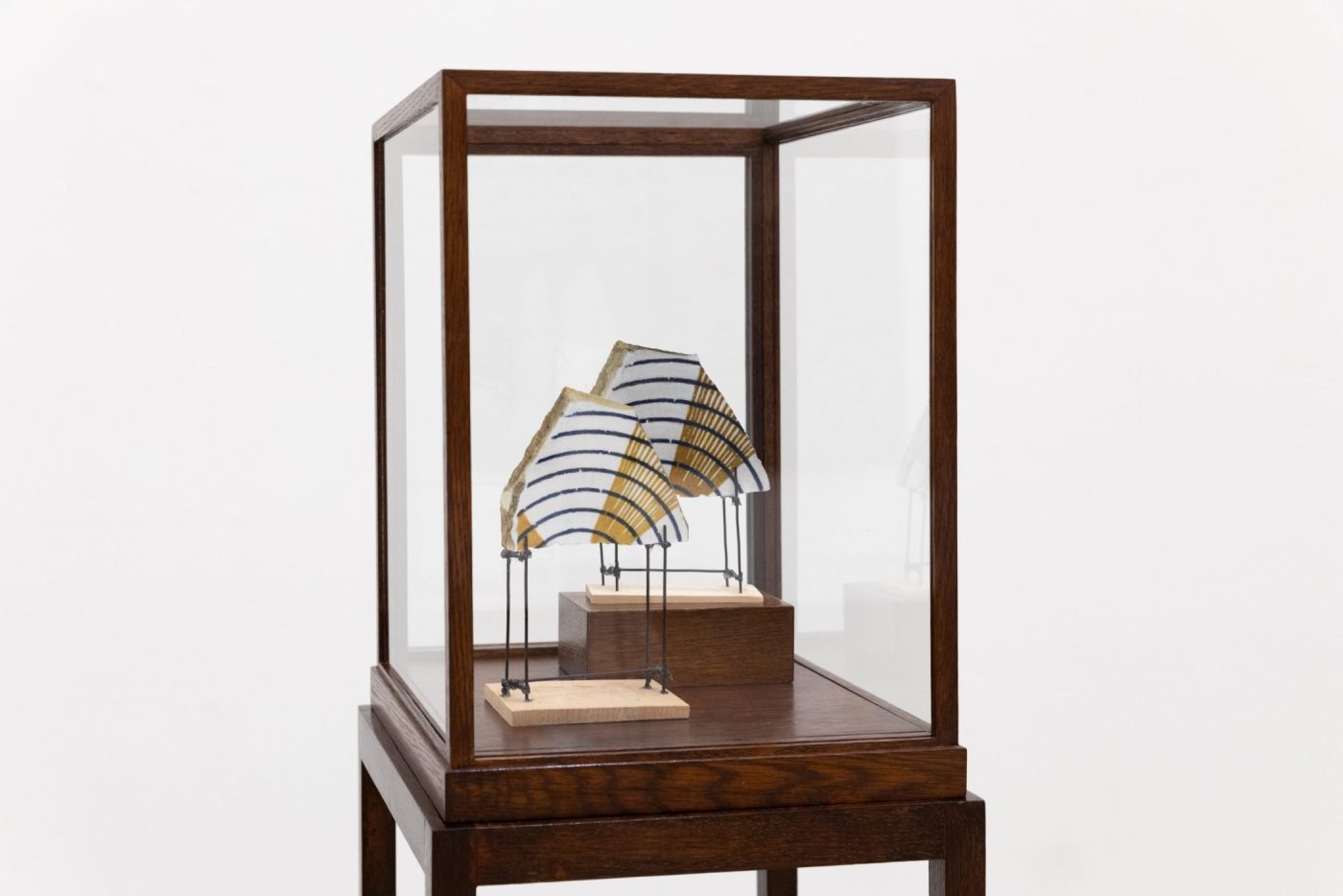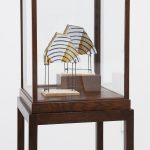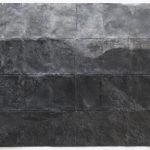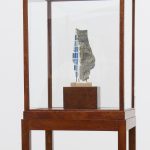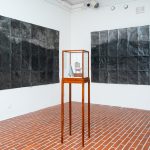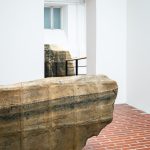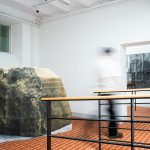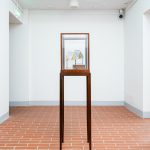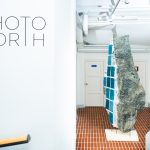Sebastian Reis’ exhibition Sala Terrena invites the viewer to enter a world connected to different temporalities and histories. Through photographic and sculptural presentations of objects of different origins and significance, Reis explores traces that contemporary humans leave behind and asks: what will be left of us?
On view at Photo North – Northern Photography Centre’s main gallery are diorama-like settings in which the viewer is invited to decipher or interpret somewhat historical objects playing with scale, combinations of two-dimensional images and their three-dimensional structures. The objects exist in the present moment, but the concept of anachronism is inherently built into the theories about the past: interpretations happen only in the light of current theory and knowledge, and bring out phenomena relevant to people today. According to archaeologist Gavin Lucas, objects must be thought of as events with their own event-specific duration. Each object has many lives and many users, and when found again, its function and value may change completely. 1
Like the work of an archaeologist is crystallized in the study of the material and how it reflects the human environment, materiality also plays an essential part in Reis’ work. Through an elaborate and intuitive process of photography, printing, transferring and finishing using a mixture of contemporary textures and colours, works with unique characteristics take shape. Fascinated by the history and its presence in our surroundings, Reis strives to push himself forward as an artist: he aims to produce every work himself, from smallest details to the vitrines on display.
The exhibition’s name, Sala Terrena, refers to a large, formal room common in Baroque castles. These garden halls have a direct access to a garden and are typically decorated with trompe l’œil2 and other decorations that refer to legends and mythology. The transition from man-made environment into what is understood as nature functions as a metaphor for Reis’ artistic practice. His works in the exhibition originate from his ongoing investigation of the impact of human activities on our surroundings. Using traditional imagery known from art history, Reis brings out subtle elements of melancholy related to the idea of human belonging. The titles of the works with their straightforward sub-titles add a layer of language to the exhibition, similar to data gathered from archaeological objects.
Like a camera visually recording events and memories, objects and matter can function as long-term memory devices or aids. One can also ask if modern objects are made to last, to be archived or to be interpretable in the future. What kind of possibilities can data and metadata open? And which will be considered more valuable after 100 years, the objects or the information?
Sebastian Reis’ work has been supported by the Olga and Vilho Linnamo Foundation and the Arts Promotion Centre Finland (Taike).
The Mustekala online magazine podcast episode Materiaali ja aika (2023, vol. 89), where editor in chief Alonzo Heino interviews architect and researcher Panu Savolainen and archaeologist Ville Rohiola, was also used as an inspiration for this exhibition text.
Guided exhibition tours at the Valve Cultural on February 15th and March 14th starting at 5 PM from the lobby of the Valve Cultural House.
Artist meeting on April 7th at 2 PM at the Photo North – Northern Photography Center’s gallery.
Footnote 1: Lucas, Gavin, 2008. Time and Archaeological Event. Cambridge Archaeological Journal.
Footnote 2: An artistic term for the highly realistic optical illusion of three-dimensional space and objects on a two-dimensional surface.
